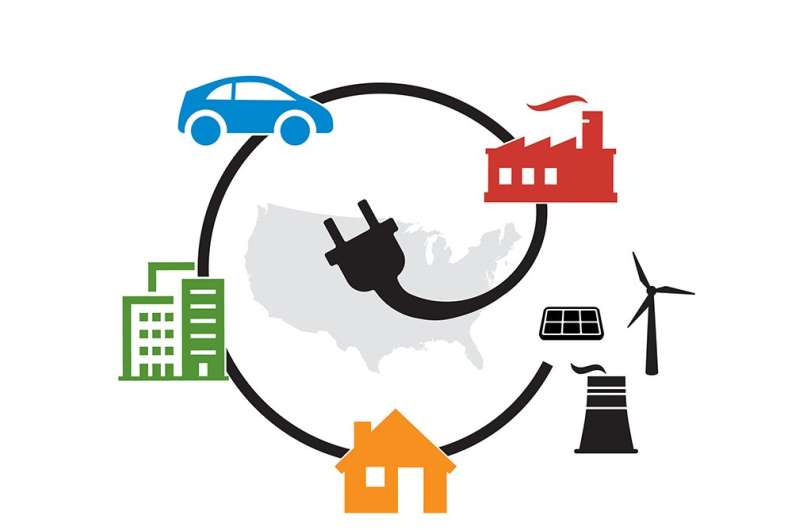NREL launches electrification futures study series

The U.S. Department of Energy's National Renewable Energy Laboratory (NREL) is spearheading the Electrification Futures Study, a research collaboration to explore the impacts of widespread electrification in all U.S. economic sectors—commercial and residential buildings, transportation, and industry. Over the next two years, NREL and its research partners—Electric Power Research Institute, Evolved Energy Research, Lawrence Berkeley National Laboratory, Northern Arizona University, and Oak Ridge National Laboratory—will use a suite of modeling tools to develop and assess electrification scenarios designed to answer the following questions:
- What end-use electric technologies are available for the highest energy-consuming services today, and how might the technologies advance over time?
- How might widespread electrification impact national and regional electricity demand and consumption patterns?
- How would the U.S. electricity system need to transform to meet changes in demand from an electrified economy?
- What role might demand-side flexibility play to support reliable operations of a clean electricity grid?
- What are potential costs, benefits, and impacts of mass electrification?
"With significant improvements in electric technologies—particularly in electric vehicles but also in other sectors—we've seen a dramatic increase in interest in electrification from electric utilities, equipment manufacturers, and others," said Trieu Mai, NREL senior researcher and principal investigator of the study. "Widespread electrification could have major energy, economic, and environmental impacts to the entire U.S. power system and broader economy. In this study, we plan to quantify some of these impacts."
NREL has just released the first in the series of reports under the study, Electrification Futures Study: End-Use Electric Technology Cost and Performance Projections through 2050.
This report uses a combination of recently published literature and expert assessment to develop future cost and performance projections for end-use electric technologies, including light-, medium-, and heavy-duty vehicles, and residential and commercial heat pumps.
Three advancement trajectories, spanning a large but plausible range given historical trends and innovation possibilities, are developed for each end-use technology considered for the transport and buildings sectors. The report also provides a comprehensive assessment of the literature on industrial electrotechnologies and highlights significant research gaps for that sector.
Electrification Futures Scenario Analysis Slated for Spring 2018
Data from the End-Use Electric Technology Cost and Performance Projections through 2050 report, is available on the Electrification Futures Study website. The data will be used in the Electrification Futures Study scenario analysis, which will explore the extent of end-use technology adoption, energy and electricity consumption patterns, and supply-side futures under different levels of electrification. Ultimately, these electric technology cost and performance projections will be used to estimate the range of incremental costs and fuel use in the electrification scenarios to be examined in future publications.
"Beyond our use, we hope the technology projections and literature review presented in this first report will be an informative source for R&D managers, planners, and researchers interested in electrification technologies," said lead author Paige Jadun, energy analyst in NREL's Strategic Energy Analysis Center.
Provided by National Renewable Energy Laboratory


















